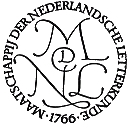Karel van de Woestijne, aristocraat, discomaan. De grammofoon en de constructie van een auteurspostuur
Samenvatting
During the interwar period, the Low Countries saw the evolution of the arcane, nineteenth-century technology of Thomas Edison’s phonograph into the fully-fledged mass medium of the gramophone. A sound-reproduction device patented by Emile Berliner around the turn of the century, this record player stirred the imagination of many a literary writer, not only as a formal or thematic device, but also as a posture-developing tool. In this article, we explore the tendency of modern authors to shape and mould their public image by associating themselves with the gramophone as specialized owners and listeners. We will map this dynamic by focusing on the journalistic writings of the widely celebrated Flemish poet Karel Van de Woestijne. Van de Woestijne’s Gramophonische tijdingen (Gramophonic Tidings, 1928-1929), a series of reviews of gramophone records for the Flemish newspaper De Standaard, not only provide a unique insight into the contemporary perception of new media, they are also diligently used by Van de Woestijne to negotiate the double posture of the high-brow aristocrat and the middle-brow ‘discomaniac’ or record collector.
Terugverwijzingen
- Er zijn momenteel geen terugverwijzingen.



